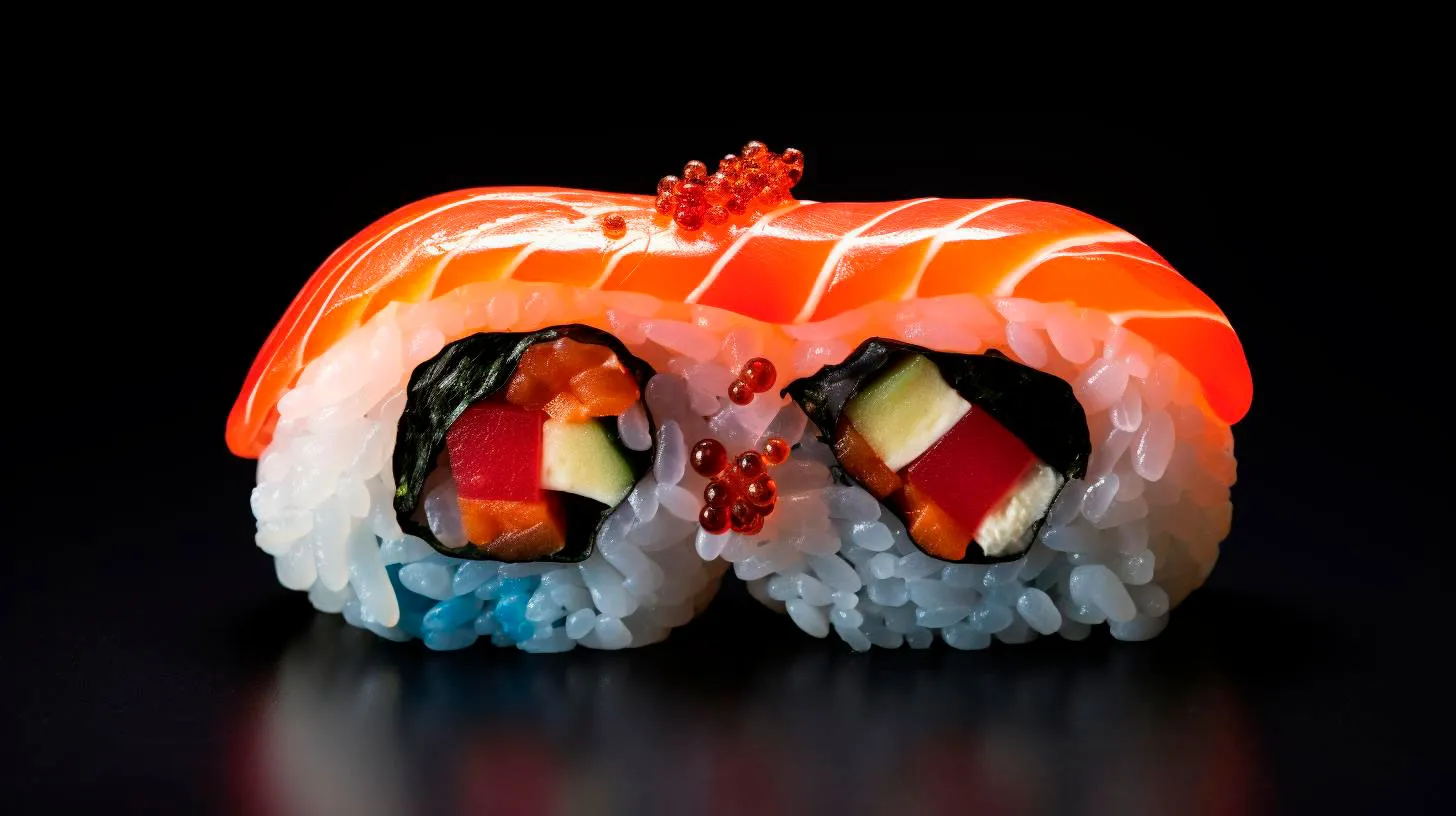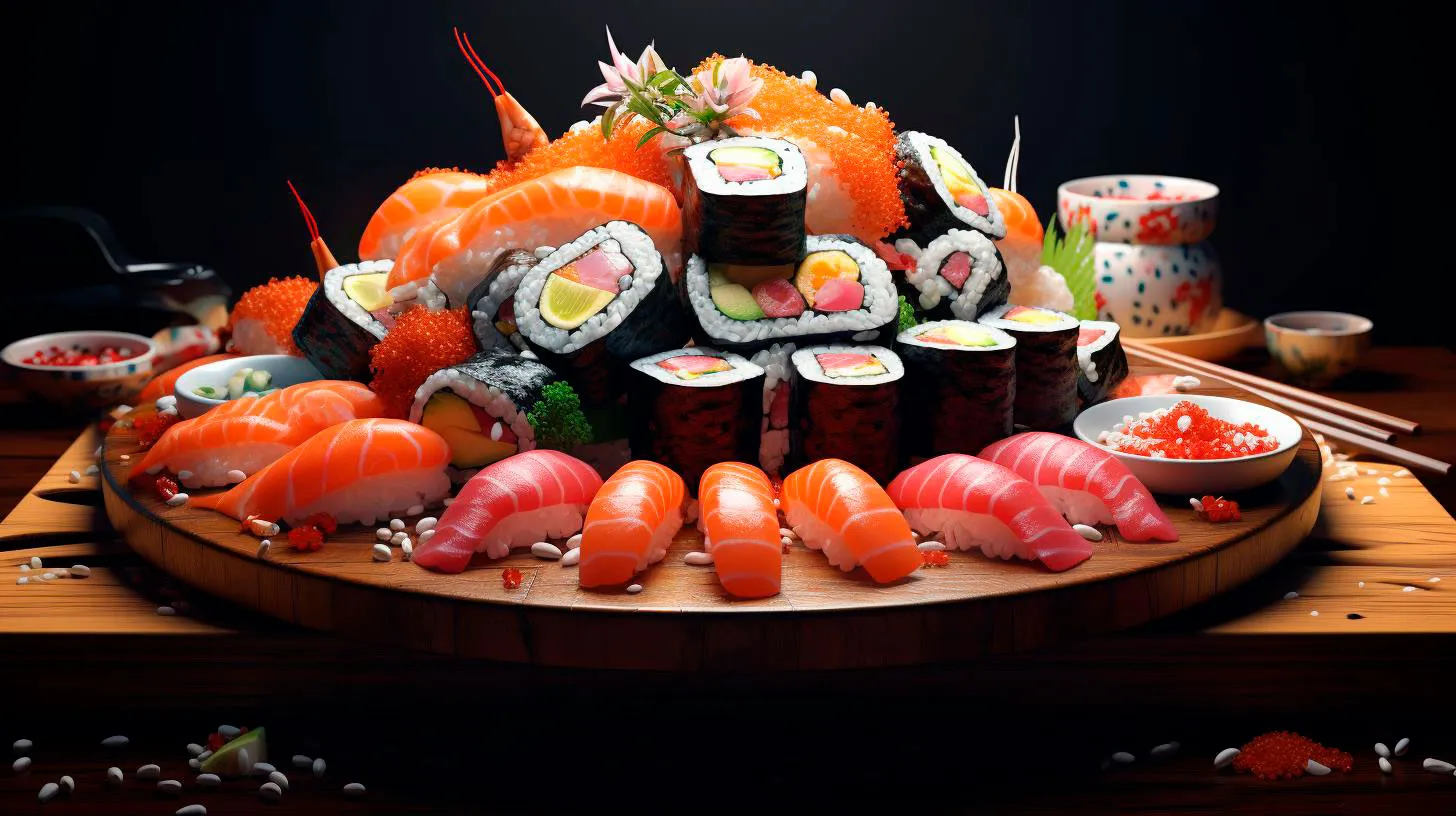The Art of Sushi: A Meditative Culinary Experience
In this article, we explore the art of sushi and its mesmerizing journey from the ocean to your plate.
The Mastery Behind Sushi
Sushi making is a skill that takes years to master. It requires a deep understanding of the different types of fish, their flavors, and textures. The sushi chef, known as an Itamae, undergoes rigorous training to perfect their knife skills and learn the art of balancing flavors. This level of mastery ensures that every bite of sushi delivers a harmonious blend of taste and texture.
- Precision and Technique: Sushi making involves precise knife cuts and shaping to create perfect bite-sized pieces. Each type of sushi has its specific shape and size, requiring the Itamae to be meticulous in their craftsmanship.
- The Art of Seasoning: Apart from the fish, the rice is a crucial component of sushi. The Itamae delicately seasons the sushi rice with vinegar, sugar, and salt, giving it a unique flavor profile that complements the fish. Achieving the perfect balance of seasoning is an art in itself.
- Creative Presentation: Sushi is as much about taste as it is about presentation. Itamaes showcase their creativity by arranging the various ingredients on a plate to create visually appealing and enticing sushi platters.
The Meditative Journey: From Ocean to Plate
The art of sushi extends beyond the chef’s craftsmanship; it begins with the careful selection of ingredients and their fresh quality. Here is the mesmerizing journey that sushi undertakes before it reaches your plate:
- Top-Grade Fish: Sushi relies heavily on fresh, top-grade fish. The fish is carefully selected based on its quality, color, and fat content. It must be handled with extreme care to maintain its texture and taste.
- The Rice: Sushi rice, also known as shari, is the foundation of sushi. It is meticulously cooked and seasoned with a delicate mix of vinegar, sugar, and salt. The rice must have the perfect stickiness, allowing it to hold its shape.
- Knife Skills: Slicing the fish requires exceptional knife skills. The Itamae uses a sharp, long-bladed knife to make precise cuts that bring out the best flavors and textures of the fish.
- Artful Assembly: The Itamae carefully combines the fish and rice, shaping it with their hands or bamboo mats. This process ensures that each piece of sushi is consistent in size and shape.
- Garnishes and Condiments: Sushi is often served with pickled ginger, wasabi, and soy sauce. These condiments enhance the overall culinary experience by adding layers of flavor and freshness.
The Therapeutic Effects of Sushi
Besides being a culinary delight, sushi offers several therapeutic benefits that contribute to its growing popularity:
- Meditative Experience: Sushi preparation requires utmost concentration and focus, allowing the Itamae to enter a state of meditation. The repetitive motions of slicing, rolling, and shaping the sushi can have a calming effect on the mind.
- Health Benefits: Sushi is packed with nutrients, including essential fatty acids, vitamins, and minerals. It is a low-calorie, high-protein food choice that promotes overall health and well-being.
- Social Connection: Sushi is often enjoyed in the company of others, making it a communal dining experience. The act of sharing sushi enhances social bonds and fosters a sense of connection.
In conclusion, sushi is not just a meal; it is an art form that captivates both the senses and the soul. The artistry behind sushi and its meditative preparation process make it a truly remarkable culinary experience. The next time you indulge in sushi, take a moment to appreciate the precision, technique, and creativity that goes into crafting each bite. Savor the flavors, embrace the beauty, and embrace the art of sushi.
Savoring Perfection: Exploring the Exquisite World of Sushi
What Makes Sushi Special?
At its core, sushi is a combination of vinegared rice, often seasoned with a hint of sweetness, and a variety of fillings. From succulent slices of raw fish to vibrant vegetables and mouthwatering seafood, sushi offers a myriad of flavors and textures in each bite. The unique aspect of sushi lies in its intricate craftsmanship, carefully prepared by skilled sushi chefs.
Types of Sushi
Sushi can be categorized into different styles, each offering distinctive tastes and ingredients:
- Nigiri: Hand-pressed oblong-shaped sushi rice topped with sliced raw fish or seafood, often garnished with a touch of wasabi.
- Maki: Sushi rolls wrapped in seaweed sheets (nori), filled with various ingredients like fish, seafood, veggies, and rice, then sliced into bite-sized pieces.
- Sashimi: Fresh slices of raw fish or seafood, served without rice.
- Temaki: Cone-shaped hand rolls filled with a combination of ingredients and wrapped in nori.
- Uramaki: Inside-out rolls with the rice on the outside and the nori and fillings on the inside.
The Health Benefits of Sushi
Sushi is not only a feast for the senses but also a nutritious choice for your body. Here are some health benefits associated with enjoying sushi:
- Omega-3 Fatty Acids: Sushi made with fatty fish, such as salmon or tuna, provides essential omega-3 fatty acids, which improve heart health and brain function.
- Protein-Rich: Fish and seafood used in sushi are excellent sources of protein, promoting muscle growth and repair.
- Low in Fat: Sushi is generally low in unhealthy saturated fats, making it a healthier alternative to many other types of fast food.
- Antioxidants: Sushi often incorporates vegetables like avocado and cucumber, which are rich in antioxidants that help protect against cell damage.
The Exquisite Art of Sushi
Preparing sushi is more than just assembling ingredients. It is an art form that requires precision, skill, and attention to detail. Here are some key elements that make sushi a true masterpiece:
- Freshness: Sushi relies on the use of fresh, high-quality ingredients to enhance the flavors and ensure food safety.
- Knife Skills: Sushi chefs spend years honing their knife skills to master the art of slicing fish and vegetables with precision.
- Balance and Harmony: Sushi aims to achieve a delicate balance of flavors, textures, and colors, creating a harmonious dining experience.
- Presentation: Sushi is meticulously presented, often arranged on beautiful ceramic plates or wooden platters, appealing to both the eyes and taste buds.
Key Takeaways
Sushi offers a delightful gastronomic journey, combining flavors, tradition, and artistry. Here are the key takeaways to remember:
- Sushi encompasses various types, including nigiri, maki, sashimi, temaki, and uramaki.
- The health benefits of sushi include omega-3 fatty acids, protein, and antioxidants.
- Sushi is an art form that relies on freshness, knife skills, balance, and exquisite presentation.
- Enjoying sushi goes beyond taste; it is a multisensory experience that nourishes both the body and soul.
Whether you are an avid sushi connoisseur or new to this culinary delight, exploring the exquisite world of sushi is an experience that will leave you savoring perfection with each bite.
Unveiling the Secrets of Sushi: From Tradition to Innovation
The Historical Roots of Sushi
Sushi’s origins can be traced back to ancient Japan, where it was primarily a method of preserving fish by fermenting it with rice. This technique allowed people to store fish for extended periods, providing a reliable source of protein. Over time, sushi evolved, with different regions adapting the dish to suit their local ingredients and preferences.
Key takeaways:
- Sushi was initially a preservation method for fish.
- Regional variations shaped sushi into diverse culinary styles.
- Traditional sushi emphasized the use of local ingredients.
The Art of Traditional Sushi
Traditional sushi, also known as Edomae sushi, embodies the essence of simplicity, precision, and fresh flavors. The delicate balance of flavors is achieved by using only the highest quality ingredients, including fresh fish, vinegared rice, and seaweed. The skillful hands of sushi chefs, honed through years of practice, transform these ingredients into edible works of art.
Advantages of traditional sushi:
- Focuses on minimal and natural ingredients.
- Highlighting the purity and freshness of fish.
- Preserving the flavors of traditional Japanese cuisine.
Innovation in Modern Sushi
While traditional sushi remains a cornerstone of Japanese culinary culture, modern chefs have embraced innovation to create unique and exciting variations of this beloved dish. Contemporary sushi may incorporate non-traditional ingredients, fusion flavors, and creative presentation techniques. This fusion of tradition and innovation allows chefs to experiment with flavors, textures, and aesthetics.
Key takeaways:
- Modern sushi embraces creativity and experimentation.
- Offers a fusion of different culinary influences.
- Explores innovative presentation techniques.
The Benefits of Sushi
In addition to its mouthwatering flavors, sushi offers a range of health benefits. The primary ingredient of sushi, fish, is a valuable source of lean protein, omega-3 fatty acids, and essential vitamins and minerals. These nutrients contribute to heart health, brain function, and overall well-being. Furthermore, the use of vinegared rice in sushi aids in digestion and provides a low-calorie alternative to other types of cuisine.
Advantages of sushi for health:
- Rich in essential nutrients and vitamins.
- Supports heart health and brain function.
- Provides a low-calorie and easily digestible meal.
The Global Phenomenon
Sushi’s popularity has skyrocketed worldwide, with sushi restaurants appearing in cities and towns across the globe. From casual takeout joints to Michelin-starred establishments, sushi has found its place in the hearts and stomachs of people from different cultures.
Relevant industry statistics:
- Sushi has become a $15 billion industry in the United States alone.
- There are over 45,000 sushi restaurants worldwide.
- California Roll, a popular sushi variation, was invented in Los Angeles in the 1960s.
Experience the Magic of Sushi
Whether you are a sushi aficionado or a newcomer to this extraordinary dish, exploring the secrets of sushi opens up a world of gastronomic pleasure. From traditional simplicity to modern innovation, sushi continues to evolve while honoring its rich heritage. So grab your chopsticks, indulge in a few rolls, and embark on a culinary adventure that transcends borders and palates.



